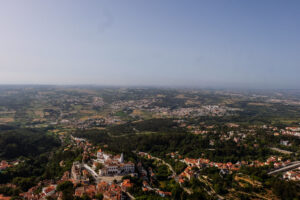Introduction to Graphs
Graphs are a fundamental data structure used in computer science and are used to model relationships between objects. It consists of a set of vertices (also known as nodes) and a set of edges that connect these vertices. Graphs can be used to represent a wide range of real-world problems, such as social networks, transportation networks, and computer networks.
Graph Representation
There are several ways to represent a graph in GoLang. One common representation is an adjacency list, where each vertex is associated with a list of its neighboring vertices. Here’s an example of representing a graph using an adjacency list in GoLang:
type Graph map[int][]int
func addEdge(g Graph, src int, dest int) {
g[src] = append(g[src], dest)
g[dest] = append(g[dest], src)
}
func main() {
g := make(Graph)
addEdge(g, 1, 2)
addEdge(g, 1, 3)
addEdge(g, 2, 3)
addEdge(g, 3, 4)
fmt.Println(g)
}
In this example, we define a Graph type as a map where the key represents a vertex and the value represents a list of its neighboring vertices. The addEdge function is used to add edges between vertices.
Graph Traversal Algorithms
Graph traversal algorithms are used to visit all the vertices in a graph. Two commonly used traversal algorithms are Depth-First Search (DFS) and Breadth-First Search (BFS).
Depth-First Search (DFS)
DFS explores as far as possible along each branch before backtracking. It uses a stack to keep track of the vertices to visit next. Here’s an example of implementing DFS in GoLang:
func dfs(g Graph, start int, visited map[int]bool) {
fmt.Println(start)
visited[start] = true
neighbors := g[start]
for _, v := range neighbors {
if !visited[v] {
dfs(g, v, visited)
}
}
}
func main() {
g := make(Graph)
addEdge(g, 1, 2)
addEdge(g, 1, 3)
addEdge(g, 2, 3)
addEdge(g, 3, 4)
visited := make(map[int]bool)
dfs(g, 1, visited)
}
In the above example, the dfs function performs a depth-first search starting from the specified vertex. It keeps track of visited vertices to prevent infinite loops.
Breadth-First Search (BFS)
BFS explores all the vertices of a graph level by level. It uses a queue to store the vertices to visit next. Here’s an example of implementing BFS in GoLang:
func bfs(g Graph, start int, visited map[int]bool) {
queue := []int{start}
visited[start] = true
for len(queue) > 0 {
vertex := queue[0]
fmt.Println(vertex)
queue = queue[1:]
neighbors := g[vertex]
for _, v := range neighbors {
if !visited[v] {
visited[v] = true
queue = append(queue, v)
}
}
}
}
func main() {
g := make(Graph)
addEdge(g, 1, 2)
addEdge(g, 1, 3)
addEdge(g, 2, 3)
addEdge(g, 3, 4)
visited := make(map[int]bool)
bfs(g, 1, visited)
}
The bfs function performs a breadth-first search starting from the specified vertex. It uses a queue to store the vertices to visit next, ensuring that vertices at the same level are visited before moving to the next level.
Other Graph Algorithms
Apart from graph traversal algorithms, there are other commonly used graph algorithms:
Dijkstra’s Algorithm
Dijkstra’s algorithm is used to find the shortest path between two vertices in a weighted graph. It assigns tentative distances to all vertices and continually updates the distances until the shortest path is found. GoLang provides a built-in heap package that can be used to implement Dijkstra’s algorithm efficiently.
Topological Sorting
Topological sorting is used to order the vertices of a directed graph in such a way that for every directed edge u -> v, vertex u comes before vertex v in the ordering. It is commonly used in task scheduling and dependency resolution.
Connected Components
Connected components are used to find groups of vertices that are connected to each other in an undirected graph. It helps in identifying separate sub-graphs within a larger graph.
Conclusion
In this article, we covered the basics of working with graphs in GoLang. We discussed graph representation using adjacency lists, implemented depth-first search (DFS) and breadth-first search (BFS) traversal algorithms, and briefly mentioned other graph algorithms such as Dijkstra’s algorithm, topological sorting, and connected components. Graphs are an essential concept in computer science, and understanding them can help in solving various real-world problems efficiently.
Remember, practice is key when it comes to mastering graph algorithms. Try implementing them on different problem sets to gain a deeper understanding. Happy graph traversing in GoLang!





